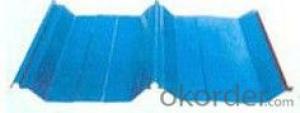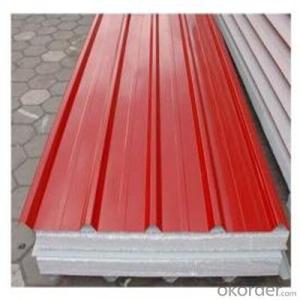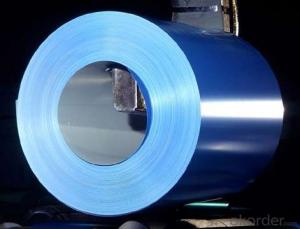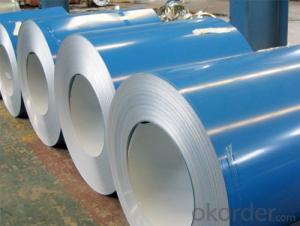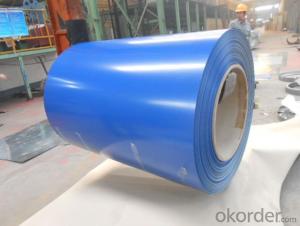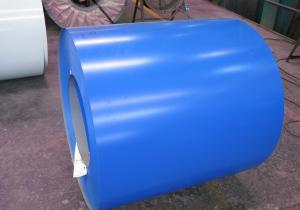BLUE COLOR CORRUGATED GALVANIZED STEEL SHEET
- Loading Port:
- China Main Port
- Payment Terms:
- TT OR LC
- Min Order Qty:
- -
- Supply Capability:
- -
OKorder Service Pledge
OKorder Financial Service
You Might Also Like
Name: BLUE COLOR CORRUGATED GALVANIZED STEEL SHEET
1.standard:ASTM BS DIN JIS GB
2.grade:SGCC/DX51D
3.zinc coating:Z60-275g/m2
4.package:export standard package or as per the buyers' requirement
5.Application:mainly used in the field of roof ,outer wall and cabinet,automotive manufacturing, electrical products, locomotives, aviation, precision instrument, canned food, ect.
6.Product features:
(1) good durability, and can be used longer than galvanized steel ;
(2) has good heat resistance, and compared with galvanized steel,under high temperature it does not discolor easily;
(3) has good heat reflecting
(4) have silvery white luxuriant surface;
(5) has machining capability and spraying performance similar to galvanized steel ;
(6) good weldability.
(7)0.18mm-1.2mm
Features for corrugated roofing sheet
1) Roll formed by roll forming machines, the thickness and color can be different
2) Easy installation
3) High strength
4) More economic (low cost)
5) They are widely use as the wall or roof of factory, warehouse, garage,
exhibition center and cinema
6) Raw materials: Cold-rolled steel, galvanized steel, galvanized pre-painted
sheet and aluminum sheet
7) A fluted profile makes it suitable for many applications where flat sheet would
not normally be considered. The longitudinal flutes provide rigidity along the
length of the sheet while retaining full flexibility across the width...
- Q: How are steel coils used in the manufacturing of agricultural structures?
- Steel coils are a vital component in the manufacturing of agricultural structures due to their durability, strength, and versatility. These coils, which are typically made from high-quality steel, are used in various ways throughout the process of constructing agricultural structures such as barns, silos, and storage buildings. One of the primary uses of steel coils in agricultural structures is in the fabrication of the building's framework. The coils are unwound and cut into specific lengths, which are then bent, shaped, and welded together to form the structural framework of the building. The strength and rigidity of steel coils make them an ideal choice for withstanding the heavy loads and harsh environmental conditions commonly found in agricultural settings. Additionally, steel coils are also used to manufacture various components and accessories for agricultural structures. These coils can be transformed into panels, roofing sheets, doors, and windows, which are essential elements in the construction of agricultural buildings. The ability to customize the shape, size, and thickness of the steel coils allows for flexibility in design and ensures that the finished structure meets the specific requirements of the agricultural application. Furthermore, steel coils play a crucial role in providing protection and safety within agricultural structures. They are used to fabricate fencing and gates, providing a secure boundary around the premises and preventing unauthorized access. Steel coils can also be used to reinforce the walls and floors of the building, enhancing its overall stability and durability. Moreover, steel coils offer excellent resistance to corrosion, which is particularly important in agricultural structures due to the exposure to moisture, chemicals, and other corrosive elements. Their durability ensures that the structure remains intact and functional for an extended period, reducing maintenance and replacement costs. In conclusion, steel coils are an essential component in the manufacturing of agricultural structures. Their strength, durability, versatility, and resistance to corrosion make them an ideal choice for constructing the framework, components, and accessories of these buildings. By utilizing steel coils in the manufacturing process, agricultural structures can be built to withstand heavy loads, harsh environmental conditions, and provide long-lasting protection for agricultural operations.
- Q: What are the different methods of cutting steel coils?
- There are several methods of cutting steel coils, including shearing, slitting, laser cutting, and plasma cutting. Shearing involves using a straight blade to cut through the coil, while slitting involves multiple circular blades that create narrower strips. Laser cutting uses a high-powered laser beam to melt and vaporize the steel, resulting in precise cuts. Plasma cutting uses a high-velocity jet of ionized gas to melt and blow away the steel, allowing for fast and accurate cuts.
- Q: If steel can rust with saltwater... then why are ships made of steel? can't we just use other metals like aluminium etc?
- also add to answers above (now below), zincs are mounted on the hull and shaft to draw the electrolysis to them instead of the hull and are easily replaced by a competent diver
- Q: Which movie is better and why?I say Man of Steel!
- Captain America
- Q: How are steel coils stored and transported?
- Steel coils are typically stored in large warehouses or outdoor storage yards. They are stacked horizontally on top of each other, with wooden or steel supports placed between each coil to prevent damage. When it comes to transportation, steel coils are usually loaded onto flatbed trucks, railcars, or shipping containers. Specialized equipment such as coil racks or coil cradles may be used to secure and stabilize the coils during transport.
- Q: Will a 8mm steel ball fired from a 150lbs crossbow kill small game and if so, from how many yards?
- People usually compare regular fiber stringed crossbows with the string in steel ball crossbows. steel ball crossbows shoot with steel cables that can take the light weight of the ball . On top of that they are ALLWAYS have cams that reduce the tension when releasing the ball. I own a 160 lbs crossbow that shoots both bolts and 8mm balls and I love it, it can take a raccoon , a rabbit , even a turkey and it is very easy to reload since it keeps several balls in the magazine. About how accurate it is , as most shooting weapons it is a matter of practice. I have a pistol 6 mm balls and is really fun, I don't think you can kill much with that one but it is fun to shoot at around the house. I would give it a try , you might be pleasantly surprised.
- Q: Can steel coils be customized according to specific requirements?
- Yes, steel coils can indeed be customized according to specific requirements. Customization can include adjusting the size, shape, thickness, and even the chemical composition of the steel coils to meet the specific needs and preferences of customers.
- Q: How are steel coils used in the production of steel plates?
- Steel coils are used in the production of steel plates by being fed into a rolling mill where they are gradually flattened and shaped under high pressure. This process, known as hot rolling, transforms the steel coils into thin and flat plates that can be further processed and used in various industries such as construction, automotive, and manufacturing.
- Q: so why shouldn't one use a steel cased 223 in an ar15?
- Some have said that steel cases (Russian?) will wear out the extractor prematurely, others have said they have shot thousands of rounds of these with no problems.
- Q: What are the different methods of blanking steel coils?
- There are multiple techniques utilized for blanking steel coils, including: 1. Shearing: To achieve the desired size and shape, shearing involves cutting the steel coil using a shear or a set of shears. This method is commonly used as it is fast and cost-effective, particularly suitable for thin to medium-thickness steel coils. 2. Laser cutting: Employing a high-powered laser beam, laser cutting is a precise and efficient method for cutting through steel coils. It is ideal for complex shapes and thick steel coils, providing clean and accurate cuts. Consequently, it is favored for high-quality blanking. 3. Waterjet cutting: A versatile method, waterjet cutting employs a high-pressure stream of water mixed with an abrasive material to cut through steel coils. It generates no heat and can cut through various materials, including steel. It is particularly suitable for cutting thick steel coils and intricate shapes and designs. 4. Stamping: This method involves pressing a die into the steel coil to cut out the desired shape. It is commonly used for high-volume production as it can rapidly cut multiple pieces simultaneously. Stamping is suitable for cutting simple shapes and is often combined with other processes, such as shearing or laser cutting, for more complex shapes. 5. Plasma cutting: Plasma cutting utilizes a high-velocity jet of ionized gas to cut through the steel coil. It is suitable for cutting thick steel coils and can handle a wide range of materials. Known for its speed and versatility, plasma cutting is a popular method for blanking steel coils. These methods of blanking steel coils offer various benefits depending on project requirements, such as speed, precision, complexity of shapes, and material thickness. The selection of the method relies on factors like cost, production volume, desired quality, and turnaround time.
Send your message to us
BLUE COLOR CORRUGATED GALVANIZED STEEL SHEET
- Loading Port:
- China Main Port
- Payment Terms:
- TT OR LC
- Min Order Qty:
- -
- Supply Capability:
- -
OKorder Service Pledge
OKorder Financial Service
Similar products
Hot products
Hot Searches
Related keywords
